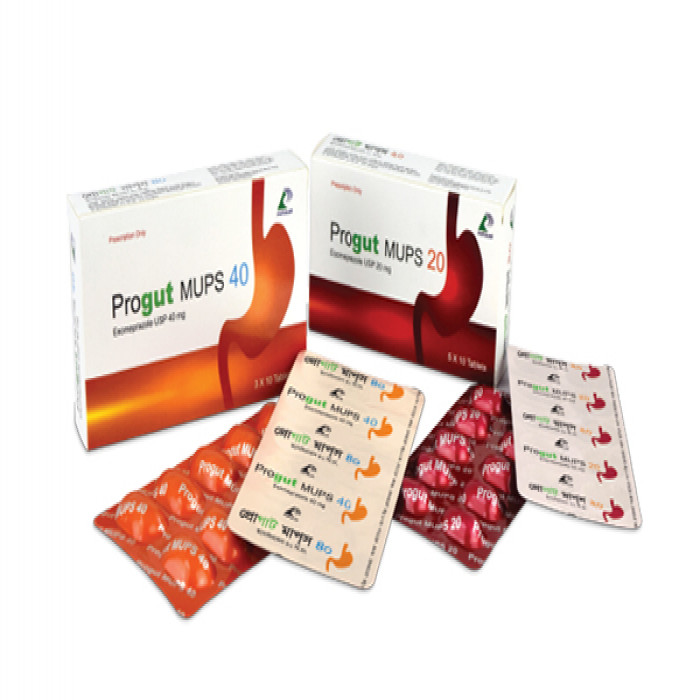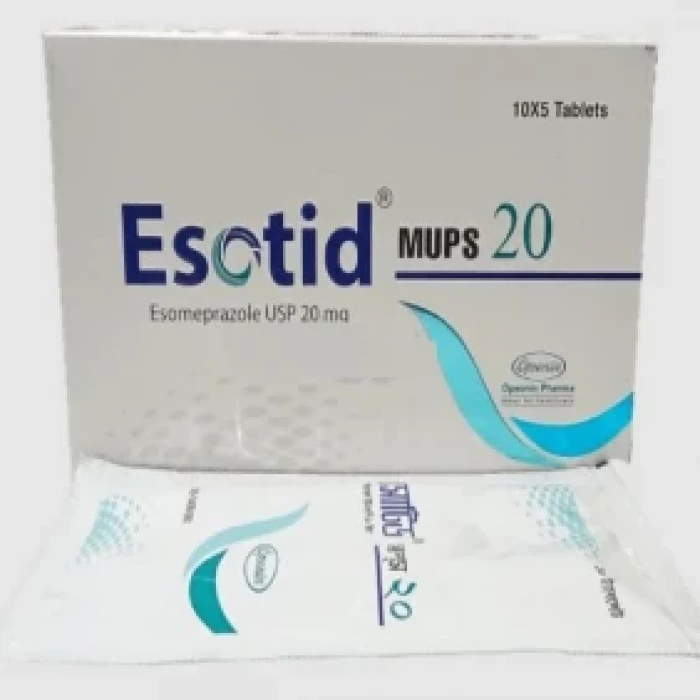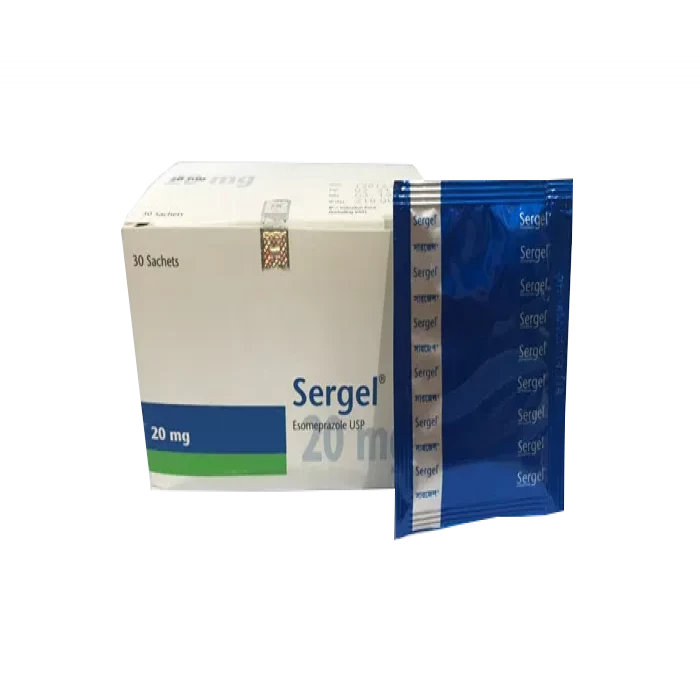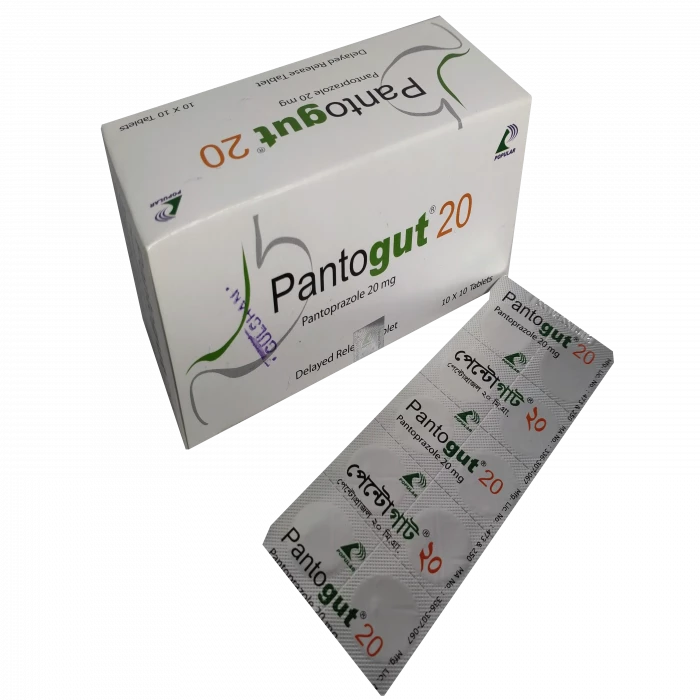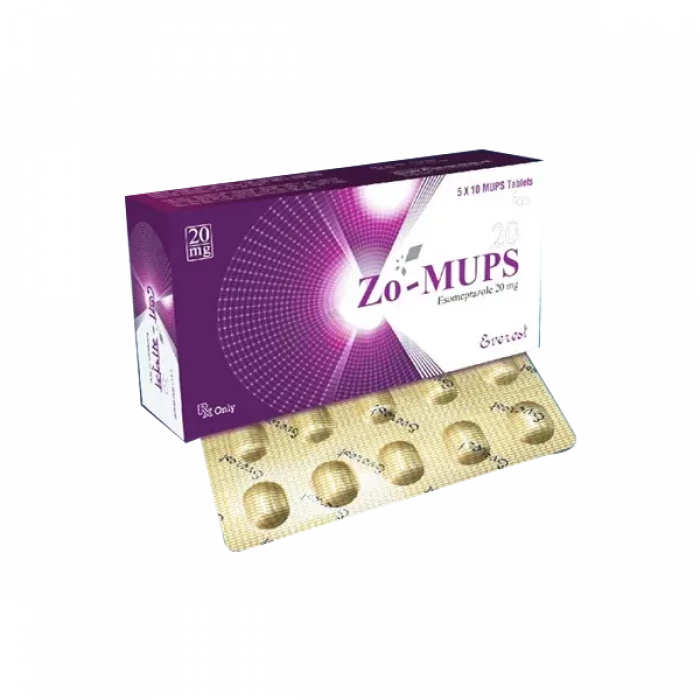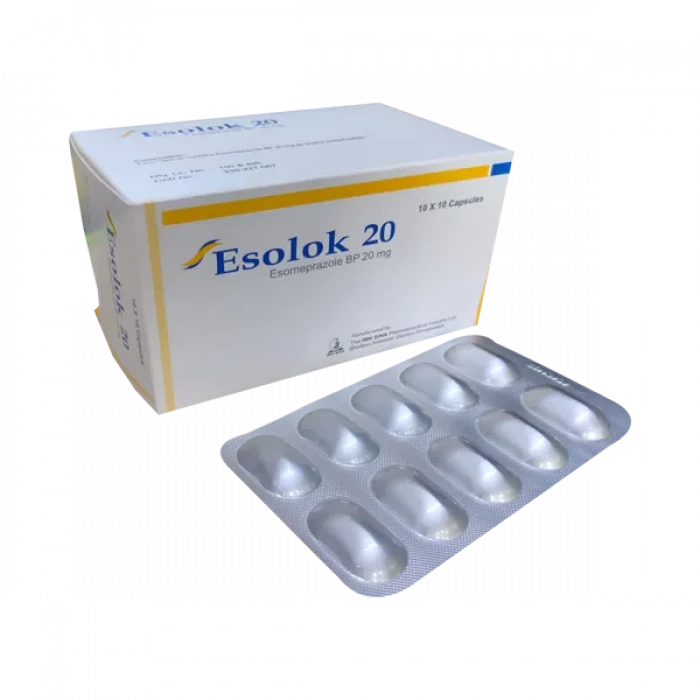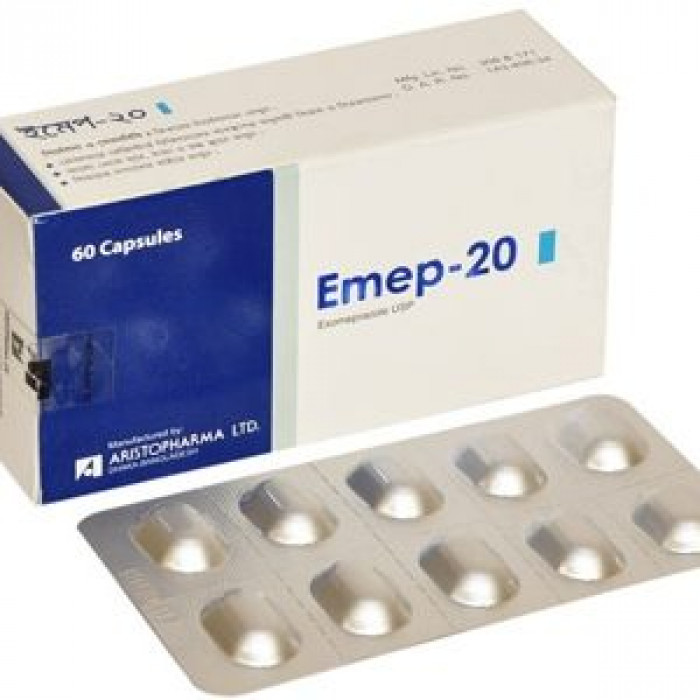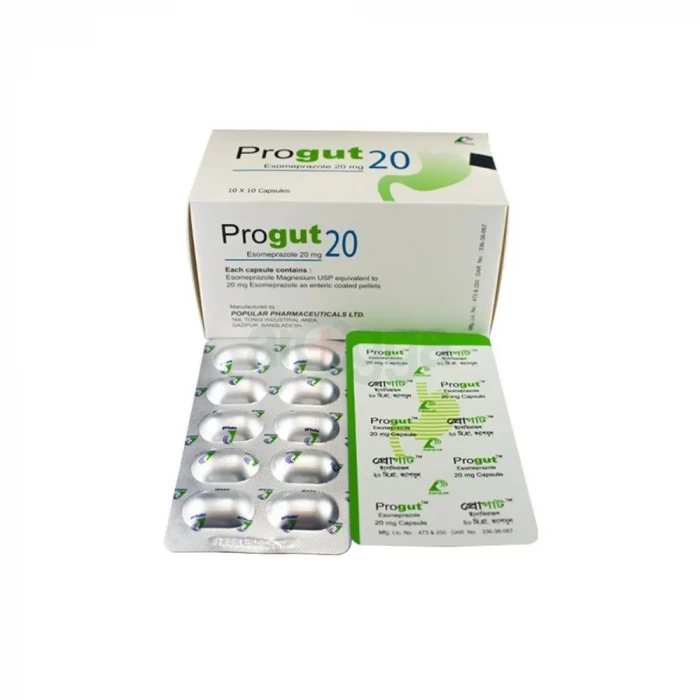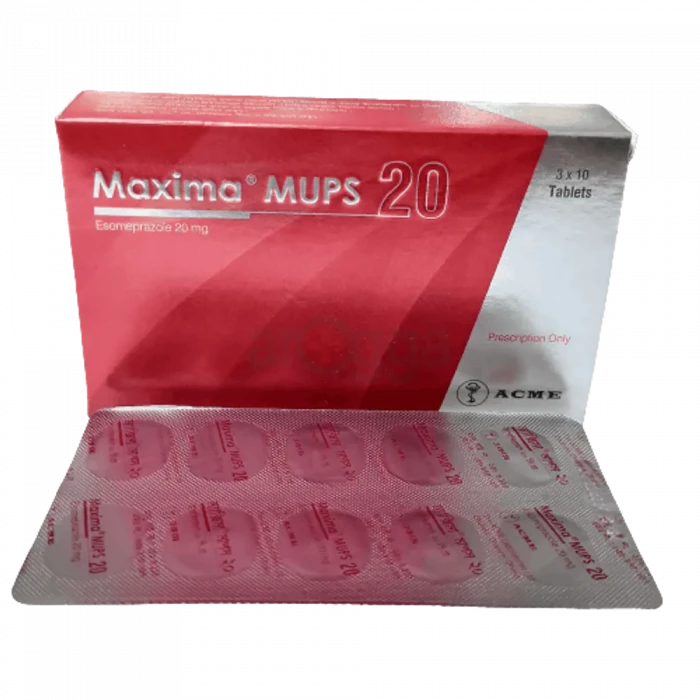
✔ 100% Authentic Product
👁️ Currently Viewing 3321
Maxima MUPS 20mg 10pcs
Tablet Manufacturer/Distributor: Acme Specialized Pharmaceuticals Ltd. Generic Name
Esomeprazole 20 mg
Discount
Price: ৳ 94
MRP:
৳
100
6%
Off

100% Genuine Products, Guaranteed

Safe & Secure Payments, Always

Fast, Secure & Efficient Delivery

Proper Packaging
 Cash on Delivery - All over Bangladesh
Cash on Delivery - All over Bangladesh Regular Delivery - 12-24 Hours, Dhaka City* Charge Tk.39-59
Regular Delivery - 12-24 Hours, Dhaka City* Charge Tk.39-59 Regular Delivery - 24-48 Hours, Other Cities* Charge Tk.99-110
Regular Delivery - 24-48 Hours, Other Cities* Charge Tk.99-110
 ফ্রি ডেলিভারিঃ - ৯৯৯ টাকা+ অর্ডারে, ঢাকা
শহরে
ফ্রি ডেলিভারিঃ - ৯৯৯ টাকা+ অর্ডারে, ঢাকা
শহরে ফ্রি ডেলিভারিঃ - ২৯৯৯ টাকা+ অর্ডারে, ঢাকার
বাহিরে
ফ্রি ডেলিভারিঃ - ২৯৯৯ টাকা+ অর্ডারে, ঢাকার
বাহিরে
100% Genuine Products, Guaranteed
Safe & Secure Payments, Always
Fast, Secure & Efficient Delivery
Proper Packaging
 Cash on Delivery - All over Bangladesh
Cash on Delivery - All over Bangladesh Regular Delivery - 12-24 Hours, Dhaka City* Charge Tk.39-59
Regular Delivery - 12-24 Hours, Dhaka City* Charge Tk.39-59 Regular Delivery - 24-48 Hours, Other Cities* Charge Tk.99-110
Regular Delivery - 24-48 Hours, Other Cities* Charge Tk.99-110 ফ্রি ডেলিভারিঃ - ৯৯৯ টাকা+ অর্ডারে, ঢাকা
শহরে
ফ্রি ডেলিভারিঃ - ৯৯৯ টাকা+ অর্ডারে, ঢাকা
শহরে ফ্রি ডেলিভারিঃ - ২৯৯৯ টাকা+ অর্ডারে, ঢাকার
বাহিরে
ফ্রি ডেলিভারিঃ - ২৯৯৯ টাকা+ অর্ডারে, ঢাকার
বাহিরে
✅ Description:
Maxima MUPS 20 is a medicine which reduces the amount of acid produced in your stomach. It is used to treat heartburn, acid reflux and problems in your food pipe. It is also used to prevent and treat stomach ulcers. You should take Maxima MUPS 20 as your doctor advises. The dose will depend on what you are being treated for, but it should be the lowest dose for the shortest amount of time needed to treat your condition. Normally it should be swallowed whole about an hour before a meal and at the same time each day. It may take up to a few weeks to work properly but your doctor will tell you how long you need to be taking it for. You should keep on taking it as prescribed even if your symptoms disappear quickly. If you are taking this medicine for a long time, your doctor may carry out regular tests to check your levels of magnesium which can fall with this medicine. Common side effects include headache, constipation or diarrhoea, stomach pain and feeling or being sick. These tend to be mild but talk to your doctor if they bother you or do not go away. The risk of side effects may increase the longer you take this medicine. Serious side effects are rare, but some need immediate medical attention. Ask your doctor what these are. You may be more likely to have a broken bone if you take it for a long time. It is best to avoid foods that seem to make your symptoms worse, such as rich, spicy and fatty foods. It also helps to cut down on caffeinated drinks, such as tea, coffee and cola, as well as alcohol. Maxima MUPS 20 is not suitable for some people. Before taking this medicine, you need to tell your doctor if you have severe liver problems, are taking medicines for HIV, have had an allergic reaction to similar medicines in the past or have osteoporosis. Alcohol does not interfere with the way Maxima MUPS 20 works. However, drinking alcohol makes your stomach produce more acid than normal. This medicine can make you feel dizzy, sleepy, or affect your vision. If this happens, do not drive, cycle or use machinery or tools until you feel better. It is not usually recommended during pregnancy and breastfeeding.
Uses of Maxima MUPS 20
- Gastroesophageal reflux disease (Acid reflux)
- Peptic ulcer disease
Side effects of Maxima MUPS 20
Common
- Headache
- Dizziness
- Dryness in mouth
- Nausea
- Abdominal pain
- Constipation
- Flatulence
- Diarrhea
How to use Maxima MUPS 20
Take this medicine in the dose and duration as advised by your doctor. Swallow it as a whole. Do not chew, crush or break it. Maxima MUPS 20 is to be taken empty stomach.
How Maxima MUPS 20 works
Maxima MUPS 20 is a proton pump inhibitor (PPI). It works by reducing the amount of acid in the stomach which helps in relief of acid related indigestion and heartburn.
What if you forget to take Maxima MUPS 20?
If you miss a dose of Maxima MUPS 20, take it as soon as possible. However, if it is almost time for your next dose, skip the missed dose and go back to your regular schedule. Do not double the dose.

Quick Tips
- It is a well-tolerated medicine and provides relief for a long time.
- Avoid eating late at night or before bedtime.
- Inform your doctor if you get watery diarrhea, fever or stomach pain that does not go away.
- Long-term use of Maxima MUPS 20 can cause weak bones and a deficiency of minerals such as magnesium. Take adequate dietary intake of calcium and magnesium or their supplements as prescribed by your doctor.
- Consult your doctor right away if you develop decreased urination, edema (swelling due to fluid retention), lower back pain, nausea, fatigue, and rash or fever. These could be signs of a kidney problem.

Brief Description
Indication
Heartburn, Acid Related Dyspepsia, Peptic ulcer disease, Zollinger-Ellison syndrome, Gastroesophageal reflux disease (GERD), Helicobacter pylori infection, Erosive Esophagitis, Gouty arthritis, Duodenal and Gastric Ulcer.
Administration
Delayed-release cap: Should be taken on an empty stomach. Take on an empty stomach 1 hr before meals. Tab: May be taken with or without food.
Adult Dose
GERD Without Erosive Esophagitis 20 mg PO qDay for 4 weeks; consider an additional 4 weeks of treatment if symptoms do not resolve completely in the first 4 weeks GERD With Erosive Esophagitis 20-40 mg PO qDay for 4-8 weeks If oral therapy inappropriate or not possible: 20-40 mg qDay IV up to 10 days; switch to PO once patient able to swallow Maintenance: 20 mg PO qDay for up to 6 months Risk Reduction of NSAID-Associated Gastric Ulcer 20-40 mg PO qDay for up to 6 months NSAID-Induced Gastric Ulcer 20 mg PO qDay for 4-8 weeks Zollinger-Ellison Syndrome 80 mg PO divided q12hr (initial); adjust regimen to efficacy; up to 240 mg PO qDay, OR 120 mg PO q12hr administered to patients Elderly: No dosage adjustment needed. Hepatic Impairment Oral administration Mild to moderate (Child-Pugh A/B): No dosage adjustment required Severe (Child-Pugh C): Not to exceed 20 mg/day
Child Dose
GERD Without Erosive Esophagitis Oral <1 year: Safety and efficacy not established 1-12 years: 10-20 mg PO qDay for up to 8 weeks >12 years: 20-40 mg PO qDay for up to 8 weeks GERD With Erosive Esophagitis (Healing) <1 month: Safety and efficacy not established 1 month to 1 year 3.5 kg: 2.5 mg PO qDay for up to 6 weeks >3.5-7.5 kg: 5 mg PO qDay for up to 6 weeks >7.5 kg: 10 mg PO qDay for up to 6 weeks 1-12 years <20 kg: 10 mg PO qDay for 8 weeks >20 kg: 10-20 mg qDay for 8 weeks >12 years 20-40 mg PO qDay for 4-8 weeks Maintenance: 20 mg PO qDay up to 6 months
Renal Dose
Renal impairment: No dosage adjustment needed.
Contraindication
Esomeprazole is contraindicated in patients with known hypersensitivity to any component of the formulation or to substituted Benzimidazoles.
Mode of Action
Esomeprazole is a PPI that suppresses gastric acid secretion by inhibiting H+/K+ ATPase in the gastric parietal cell. It is the S-isomer of omeprazole.
Precaution
Paediatric; pregnancy, lactation. Malignancy and hepatic impairment. Increased risk of developing certain infections such as community-acquired pneumonia. For patients with severe liver impairment, a dose of 20 mg should not be exceeded. Lactation Risk Summary Esomeprazole is the S-isomer of omeprazole and limited data suggest that omeprazole may be present in human milk. There are no clinical data on the effects of esomeprazole on the breastfed infant or on milk production. The developmental and health benefits of breastfeeding should be considered along with the mother’s clinical need for Esomeprazole and any potential adverse effects on the breastfed infant from Esomeprazole or from the underlying maternal condition.
Side Effect
>10% Headache (2-11%) 1-10% Flatulence (10%),Indigestion (6%),Nausea (6%),Abdominal pain (1-6%),Diarrhea (2-4%),Xerostomia (3-4%),Dizziness (2-3%),Constipation (2-3%),Somnolence (1-2%),Pruritus (1%) <1% Blood and lymphatic system disorders: Agranulocytosis, pancytopenia Blurred vision, GI disorders: Pancreatitis, stomatitis, microscopic colitis Hepatobiliary disorders: Hepatic failure, hepatitis with or without jaundice Anaphylactic reaction/shock GI candidiasis Hypomagnesemia Musculoskeletal disorders: Muscular weakness, myalgia, bone fracture Nervous system disorders: Hepatic encephalopathy, taste disturbance Psychiatric disorders: Aggression, agitation, depression, hallucination Interstitial nephritis Gynecomastia Bronchospasm Skin and subcutaneous tissue disorders: Alopecia, erythema multiforme, hyperhidrosis, photosensitivity, Stevens-Johnson syndrome, toxic epidermal necrolysis (sometimes fatal fatal)
Pregnancy Category Note
Pregnancy There are no adequate and well-controlled studies in pregnant women; esomeprazole is the S-isomer of omeprazole; available epidemiologic data fail to demonstrate an increased risk of major congenital malformations or other adverse pregnancy outcomes with first trimester omeprazole use; reproduction studies in rats and rabbits resulted in dose-dependent embryo-lethality at omeprazole doses that were approximately 3.4 to 34 times an oral human dose of 40 mg (based on a body surface area for a 60 kg person) Lactation Esomeprazole is the S-isomer of omeprazole and limited data suggest that omeprazole may be present in human milk; there are no clinical data on effects of esomeprazole on breastfed infant or on milk production; developmental and health benefits of breastfeeding should be considered along with mother’s clinical need for therapy and any potential adverse effects on breastfed infant from treatment or from underlying maternal condition
Interaction
Increased risk of digoxin-induced cardiotoxic effects. Increased risk of hypomagnesaemia w/ diuretics. May increase INR and prothrombin time w/ warfarin. May increase serum concentration of tacrolimus, saquinavir, methotrexate. May interfere the elimination of drugs metabolised by CYP2C19 (e.g. diazepam). May decrease the bioavailability of ketoconazole, erlotinib and Fe salts. Potentially Fatal: May decrease serum concentration and pharmacological effects of rilpivirine, atazanavir and nelfinavir. May decrease the antiplatelet effects of clopidogrel.
⚠️Disclaimer:
At ePharma, we’re committed to providing accurate and accessible health information. However, all content is intended for informational purposes only and should not replace medical advice from a qualified physician. Please consult your healthcare provider for personalized guidance. We aim to support, not substitute, the doctor-patient relationship.




